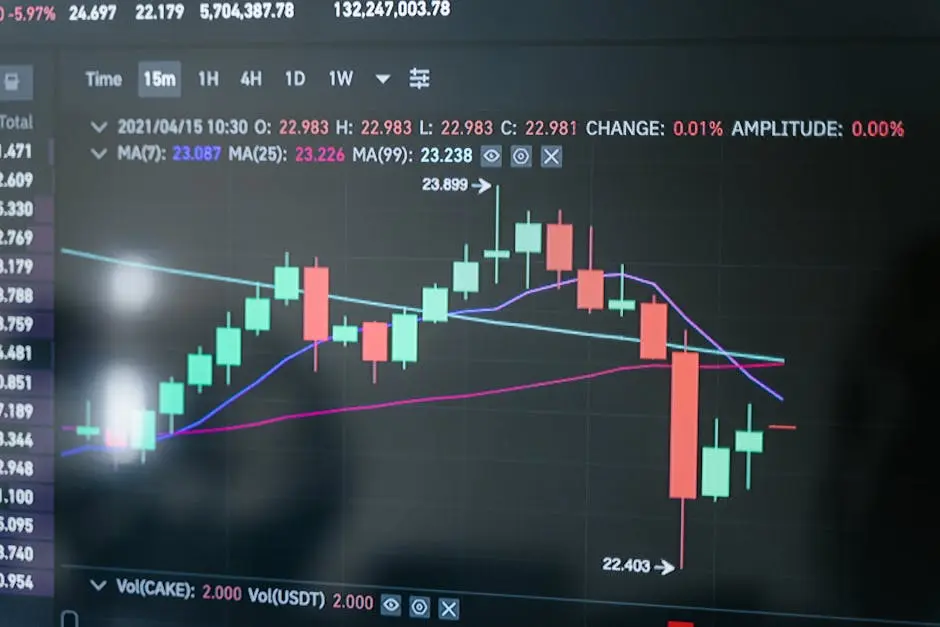Leveraged trading is a powerful concept in the financial world that can amplify gains as well as losses. In this blog post, we’ll break down what leveraged trade means and how you can successfully navigate this trading strategy.
Understanding Leveraged Trade
Leveraged trade involves borrowing funds to increase your trading position beyond what you could normally afford. This section will explain the basics and key terms associated with leveraged trading.
At its core, leveraged trading is about using borrowed capital to amplify both your potential gains and losses. Imagine you have (1,000 in your account. With leverage, you could control a position worth )5,000 or even more, depending on the ratio offered by your broker. This can be exciting, but it also comes with its challenges.
In the world of leveraged trading, the terms ‘margin’ and ‘margin call’ are crucial. The initial margin is the amount required to open a leveraged position, while a margin call occurs when your account equity falls below a certain threshold, requiring you to deposit more funds to maintain your position. Understanding these concepts is essential for any trader.
How Leverage Works in Trading
Here, we will delve into how leverage functions, including the concept of margin and how it affects your trades. It’s crucial to grasp these principles before you start trading.
Leverage works by allowing you to borrow money from your broker or trading platform. For example, with a leverage ratio of 10:1, you would only need to put down 10% of the total position value as margin. The rest is provided by the broker, enabling you to amplify your trading potential significantly.
However, this amplifying effect means that just as you can increase your returns, your losses can also escalate quickly. This is why it’s vital to choose your leverage carefully based on your trading strategy and risk tolerance. Traders should always calculate how much they can afford to lose before entering a leveraged trade.
Benefits of Leveraged Trading
This section highlights the advantages of using leverage, such as the potential for higher returns and the ability to diversify your investment portfolio.
One of the most appealing aspects of leveraged trading is the opportunity to maximize your capital efficiency. With a limited amount of money in your trading account, you can control a much larger position. This means that if the trade goes well, you can achieve significant profits without needing massive funds upfront.
Another benefit is diversification. By using leveraged trading, you can spread your investment across several assets. This can help mitigate risk by not putting all your eggs in one basket, allowing for a balanced portfolio that can potentially yield better returns.
Risks Associated with Leverage
While leverage can boost profits, it also comes with significant risks. We’ll discuss the potential pitfalls and how to mitigate them effectively.
The most obvious risk is the potential for losing more money than you initially invested. If a trade goes against you, not only could you lose your initial investment, but you could also owe money to your broker. This is why understanding your risk management strategy is crucial when engaging in leveraged trading.
Market volatility can further exacerbate the risks involved. Sudden price swings can trigger margin calls, forcing you to sell off assets at a loss to meet the broker’s requirements. To safeguard against this, many traders use stop-loss orders to help limit potential losses.
Key Strategies for Successful Leveraged Trading
In this section, we’ll explore strategies that can help you succeed with leveraged trading, including money management techniques and setting stop-loss orders.
First and foremost, establishing a solid risk management plan is essential. Determine how much of your capital you’re willing to risk on each trade and stick to that amount. This helps in maintaining discipline and avoiding emotional trading decisions.
Additionally, setting stop-loss orders can protect your investment from significant downturns. By automatically closing a position at a predetermined price, you limit your losses without needing constant monitoring of your trades.
Lastly, keeping a close eye on market conditions and updating your strategies will make a considerable difference. Leveraged trading can shift quickly, and adapting to these changes can help you stay ahead.
Wrapping Up on Leveraged Trade
By understanding the mechanics of leveraged trade, you can better manage your investment risks and potentially increase your returns. Remember to trade wisely and always consider your risk tolerance.

